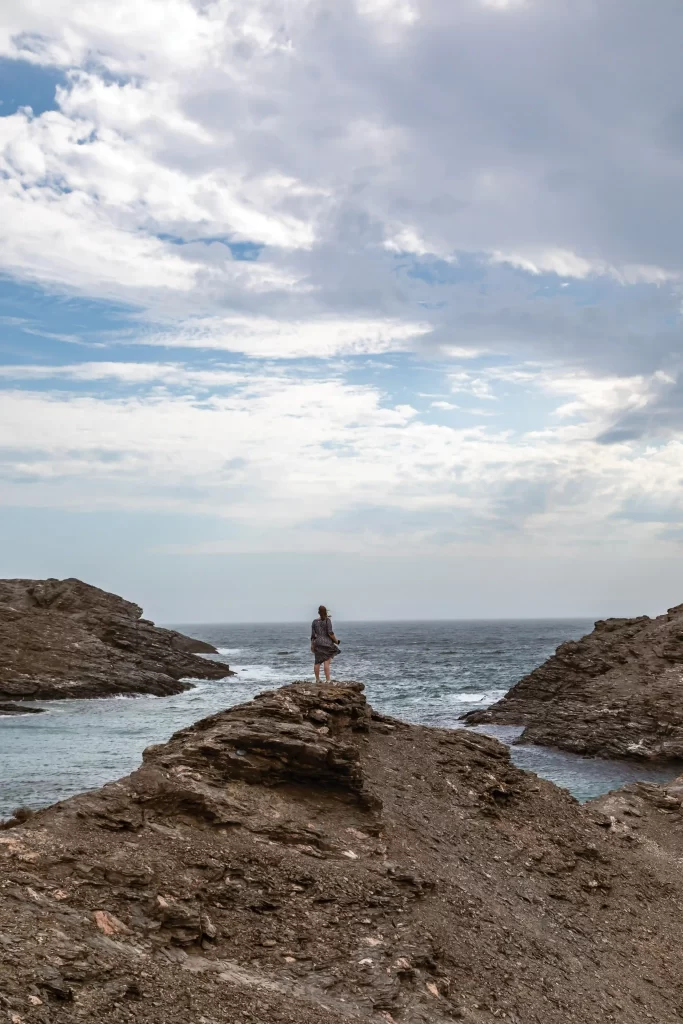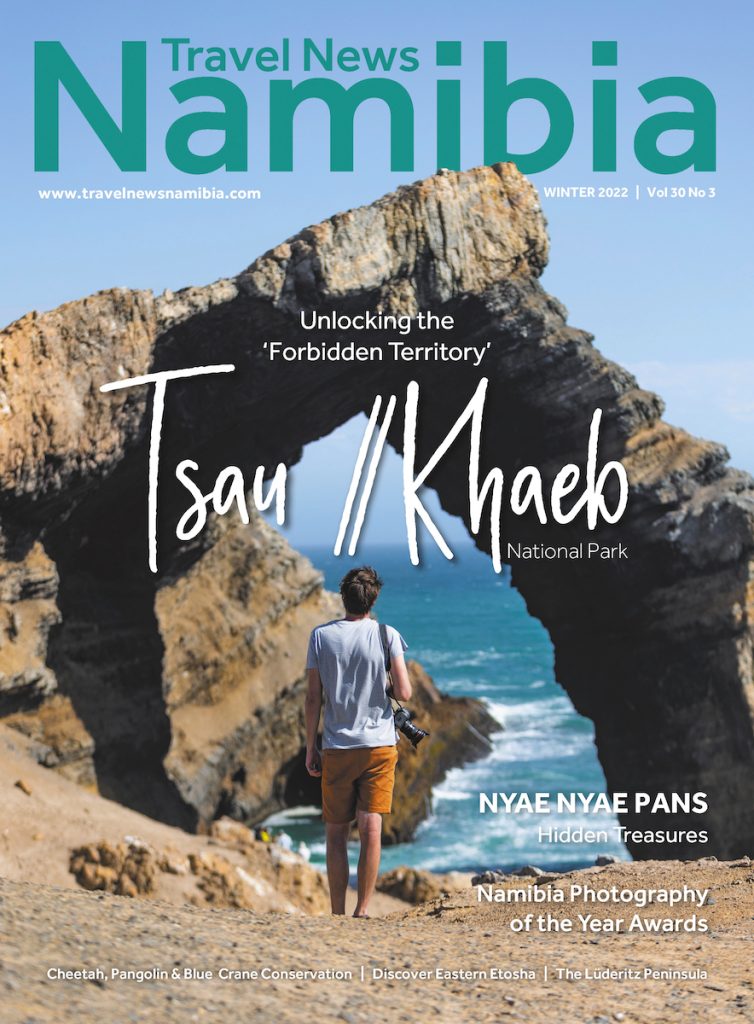

The Lüderitz Peninsula of fjords and rocky shores
Text Elzanne McCulloch
Photographs Le Roux van Schalkwyk
From the Winter 2022 issue
It was a tad windy, as it tends to be here. If it were early November, the wind would be welcomed with open arms by the migrant wind surfers gathered in this sleepy yet surprisingly vibrant corner of Namibia’s southern coast. For them, the wind means world records. For us, on this bright yet gusty April morning, the wind means hair in your face if you, like me, continuously forget to pack an elastic band. But the wind, along with strands of hair in your mouth, brings with it a sense… or rather, a scent of adventure. A scent of the unknown and yet-to-be-discovered in the air. And along this wild coast, where jagged rocks border tumultuous Atlantic waves, that scent of adventure in the air can easily catapult the active and creative mind back to a time when Portuguese sailors caught a first glimpse of the same coastline, albeit their view from the dark waters eastward. What did they imagine when first spying these shores? Imminent danger… and then absolutely nothing behind the coast. To them these shores and the hinterland it led to surely looked like the caricature of death. To us it still looks barren and forlorn, but with a vibrant little town a few kilometres away and the knowledge that our Toyota bakkie will get us where we need to be (and back), the scene leans more toward adventure and discovery than the sailors’ version of doom.
We’re exploring the Lüderitz Peninsula, the aforementioned Toyota making easy work of the well-laid-out salt routes and dirt tracks and acting as a very adequate barrier between us and the wind. From Lüderitz we follow the clearly demarcated road signs out of town in a southerly direction, along Second Lagoon toward Grosse Bucht. From here the road loops northward where along the road paths lead off toward the coast. A series of what has been labelled “fjords” can be found at the ends of these paths. The views from the crags and jagged rock faces are certainly reminiscent of the images of Norway I’ve longed over on Instagram. The routes leading to and from these fjords should certainly only be tackled with a proper 4×4 vehicle and a semi to experienced off-road driver for good measure. This is where the adventure part sets in. A short climb up scraggly hills or rocks lead to the most incredible views of the wild coast with its bays and inlets. Hold onto your hat, your camera, your jacket, your dog, your everything as the wind whips around you, even yanking my hair out of the top knot I managed to fashion with a small rubber band scoured from the bottom of my camera bag. The water below churns and tugs. Dark hues of blue and turquoise swirling with whitecaps and froth. To the west the Atlantic stretches into eternity.
Along the route you will see signs demarcating the precious and extremely sensitive breeding grounds of the Damara tern, a bird endemic to Namibia. Be conscious of where you wander and certainly stick to the roads as you explore. The region is not only home to special species of mammals, birds and reptiles, but also an extraordinary collection of flora, delicate and easily destroyed. If you’re extremely lucky you may spot a scraggly brown hyena scuttling in the distance, or seals sunbathing on a rock along the shore, Heaviside’s dolphins frolicking in the surf or African penguins waddling around on Halifax Island. Flamingos, pelicans and other waterbirds frequent the shallow waters of the lagoons and beaches.
Further north along the route we reach Diaz Point, an iconic red-and-white-striped lighthouse standing sentinel. Here, the ardent and now-famous explorer Bartolomeu Dias pinned a stone cross, or padrão, to a high rocky outcrop more than 500 years ago, marking his discovery of this new world. The actual cross has made the journey back to the northern continent from which its patron hailed, but its replacement stands tall in memoriam. Take a deep breath while you brace yourself against the gusts and soak in the history.





